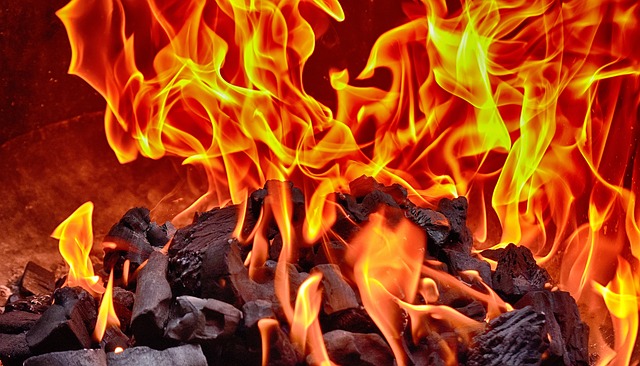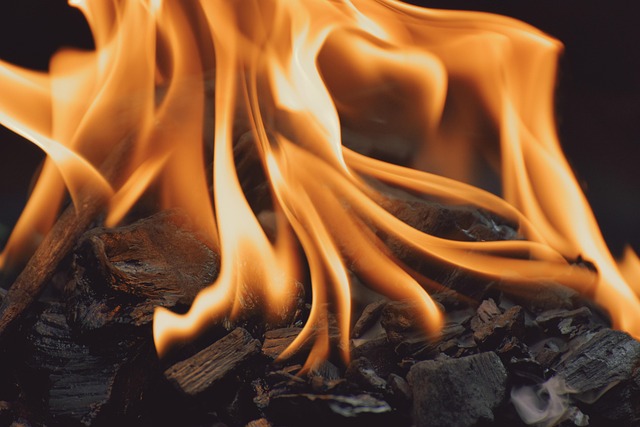Selling a house with fire damage in California requires strict adherence to disclosure laws for transparency. Homeowners must detail structural and non-structural repairs, obtain estimates from qualified contractors, and maintain records. Consulting a real estate professional is advised. State laws mandate disclosing significant alterations, including fire damage history, using standard forms to avoid legal consequences and enable informed buyer decisions. Transparent communication builds trust and mitigates post-purchase surprises.
In California, understanding real estate disclosure laws regarding fire damage is crucial for both home sellers and buyers. This comprehensive guide navigates the intricate aspects of fire damage disclosure, focusing on legal requirements unique to California. Learn what type of fire damage necessitates legal revelation, optimal timing and methods for sharing information, potential consequences of non-disclosure, and best practices for transparent communication. By adhering to these principles, sellers can ensure a smooth sale process when dealing with fire damage in their properties.
- Understanding Fire Damage Disclosure Requirements in California
- What Type of Fire Damage Requires Legal Disclosure?
- When and How to Disclose Fire-Related Information to Buyers
- Legal Implications of Non-Disclosure for Home Sellers
- Common Mistakes Sellers Make Regarding Fire Damage Transparency
- Best Practices for Open and Honest Communication with Potential Buyers
Understanding Fire Damage Disclosure Requirements in California

In California, selling a house with fire damage comes with specific disclosure requirements. Homeowners must disclose any known instances of structural or non-structural fire damage to potential buyers. This is crucial for ensuring transparency and enabling buyers to make informed decisions about purchasing a property. The state’s laws demand that sellers provide detailed information about the extent of the damage, including when it occurred, how it was repaired, and whether any professional inspections were conducted post-restoration.
For how to sell a house with fire damage in California, homeowners should start by thoroughly assessing the damage and obtaining accurate estimates for repairs from qualified contractors. Keeping comprehensive records of all repair work and documentation related to insurance claims is essential. Additionally, it’s advisable to consult with a real estate professional experienced in navigating these disclosure requirements to ensure compliance and maximize the property’s resale value.
What Type of Fire Damage Requires Legal Disclosure?

When it comes to real estate transactions in California, buyers have a right to know if a property has sustained fire damage. According to state laws, sellers must disclose any significant structural or aesthetic alterations resulting from fires, regardless of when they occurred. This includes visible signs of smoke and soot, as well as any necessary repairs or renovations made after the incident.
To meet legal requirements for how to sell a house with fire damage in California, sellers should conduct thorough inspections and document all evidence of past fires. This can include taking photos, obtaining reports from professionals, and ensuring that any disclosures are accurate and up-to-date. Transparent communication is key to navigating these regulations successfully.
When and How to Disclose Fire-Related Information to Buyers

When selling a home in California, it’s crucial to be aware of and comply with state laws regarding fire-related disclosures. If your property has experienced fire damage, buyers have a right to know about it before making an offer. Failure to disclose such information could lead to legal issues post-sale.
Fire disclosure is typically required when the property in question has sustained structural or significant non-structural fire damage within the last 120 days. Sellers must provide detailed documentation and a report from a qualified professional detailing the extent of the fire, its cause, and any necessary repairs. This information should be disclosed to potential buyers through a standard disclosure form, ensuring transparency and giving buyers an informed decision-making process when considering how to sell a house with fire damage in California.
Legal Implications of Non-Disclosure for Home Sellers

When selling a home, especially one that has experienced fire damage in California, it’s crucial to understand the legal implications of non-disclosure. State laws require sellers to disclose any material defects or issues known to them that could impact a buyer’s decision. Failure to do so can result in significant legal consequences, including financial penalties and even potential civil lawsuits.
In California, real estate transactions are governed by strict regulations aimed at protecting buyers. If a seller knowingly omits critical information about fire damage—a defect that typically falls under the category of material issues—it could be considered fraudulent or negligent. Buyers have the right to rely on accurate disclosures, and any deviation from this can lead to disputes that may require legal intervention, adding unforeseen costs and delays to the selling process for home sellers in California.
Common Mistakes Sellers Make Regarding Fire Damage Transparency

When selling a home in California, transparency is key, especially regarding any history of fire damage. Many sellers make the mistake of omitting this crucial detail, thinking it might deter potential buyers. However, withholding such information could lead to legal issues and financial losses down the line. It’s essential to disclose any fire-related incidents, even if the repairs have been done, as buyers may have specific concerns or requirements for such properties.
Sellers often overlook the potential long-term effects of fire damage, assuming that a few repairs here and there will suffice. In California, where real estate markets are competitive, it’s easy to get caught up in the rush to sell. Yet, omitting important disclosures can lead to buyer dissatisfaction post-purchase, potentially resulting in lawsuits. To avoid these pitfalls, sellers should be thorough, ensuring all fire damage details are accurately presented to prospective buyers, enabling them to make informed decisions and preventing future legal complications.
Best Practices for Open and Honest Communication with Potential Buyers

When selling a home with fire damage in California, open and honest communication is key. It’s crucial to disclose any known issues upfront to potential buyers. This includes providing detailed information about the extent of the fire damage, previous repairs made, or ongoing remediation efforts. Transparency builds trust and ensures buyers are well-informed about the property’s current state.
Best practices involve offering comprehensive documentation, such as reports from fire departments, insurance assessments, and any correspondence related to the incident. Be prepared to discuss the steps taken to mitigate risks associated with the fire damage. This could include details about smoke removal, structural repairs, or decontamination processes. An honest dialogue can help buyers make informed decisions and avoid potential surprises after purchasing the home.
Selling a home with fire damage in California requires adherence to strict disclosure laws. Understanding what constitutes legal disclosure, when and how to communicate fire-related information to buyers, and avoiding common mistakes are crucial steps for sellers. By following best practices for open and honest communication, you can ensure a smooth transaction and protect yourself from potential legal implications. When addressing fire damage, transparency builds trust with potential buyers, ultimately facilitating the sale of your California property.






